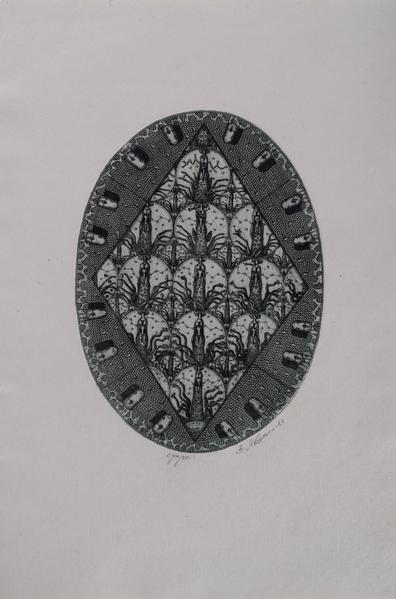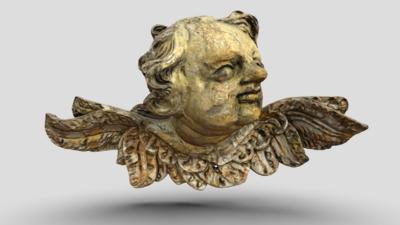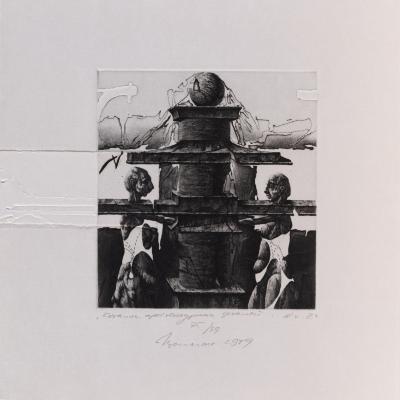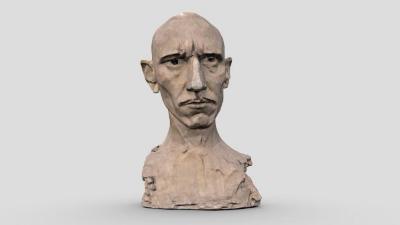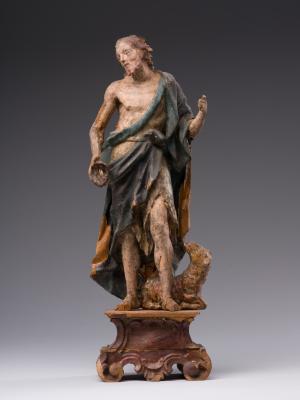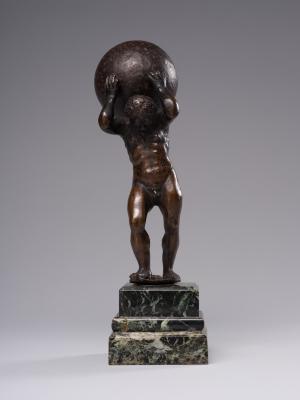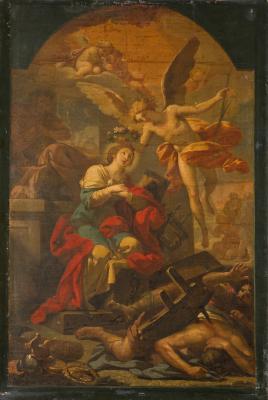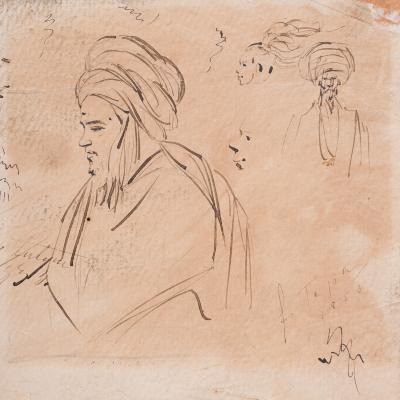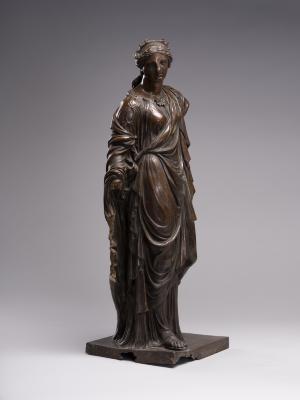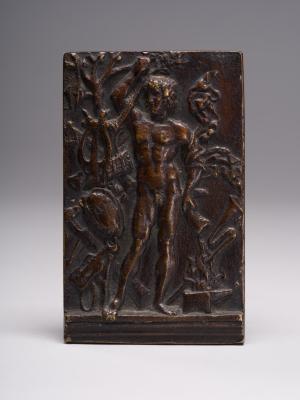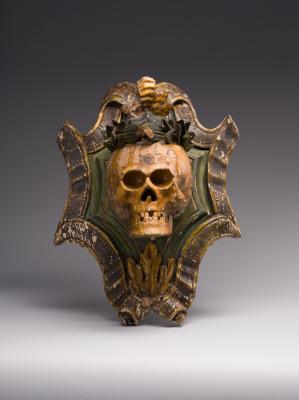June VI
Alexander Aksinin
- ID
- Г-IV-4089
- Author
- Alexander Aksinin
- Name
- June VI
- Date of creation
- 1980
- Technique
- etching
- Material
- imprint on paper
- Dimensions (height x width, cm)
- 13 x 9.5
- Type
- printmaking
- Provenance
- Courtesy of V. Onusaitis, 1987
"June VI" is the third etching in the "Months of the Year" series. In general, the artist created six of them: March, May, June, August, September, and November. Each etching visually depicts an oval framed by an openwork ribbon with noseless heads and mouths open. A rhombus is arranged in an oval, with an "individual" image for each sheet in the field. The oval's outer borders are densely filled with small balls and conical thorns. The majority of the works within the borders of rhombuses feature women's busts wearing hats. They are seated on elongated bases that resemble fantastic zoomorphic creatures reminiscent of sepia (cuttlefish). According to the author, these compositional figures are the "horsewomеn of Time".
The rhombus in this work is entirely filled with systematically placed round medallions of three different sizes. One can see disguised sepia horses in the background of the constellations depicted in medallions. Women's busts with their hands can be seen at the top of these creatures – one of the women playing the flute in the centre sprouts from the sepia with the wings. Sepia tentacles in the lower part of the rhombus turn into snakes, transforming the creatures into multi-headed hydras. In a medallion near the right corner of a rhombus, one of the snakes crawls out of a woman's mouth. It's possible that the constellation Hydra is depicted in this medallion's background.
The work's title, "JUNE VI," is written in the lower corner of the rhombus. The inscription "A.AKSININ" appears obliquely on the bottom left segment of the medallion. The artist's monogram is on one of the frame's heads on the left, with the numbers 19 and 80 on both sides (the year of creation). The numbers 11 and 153 are written on the two heads below.



